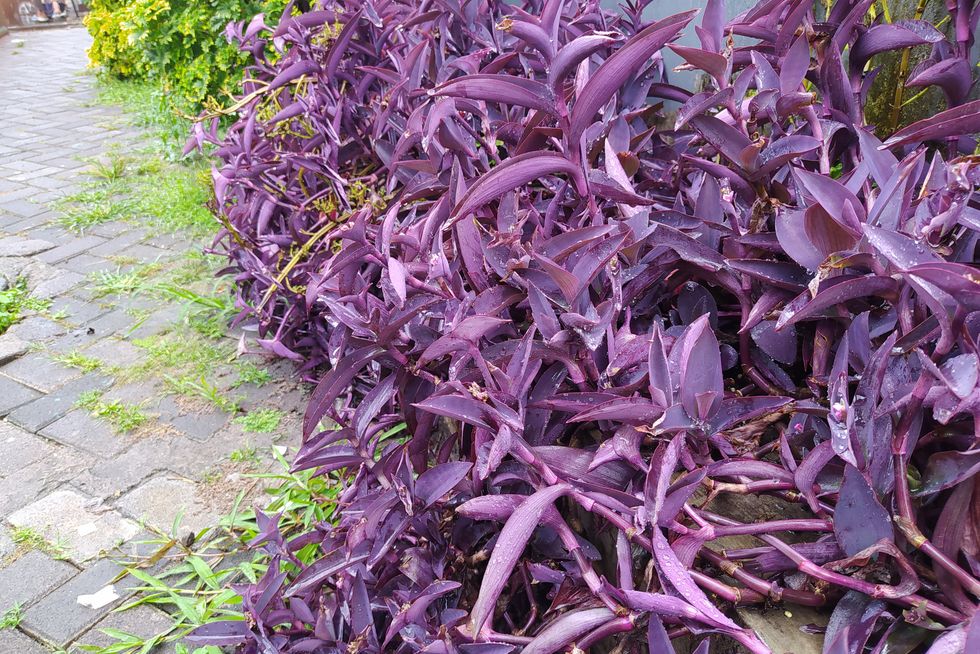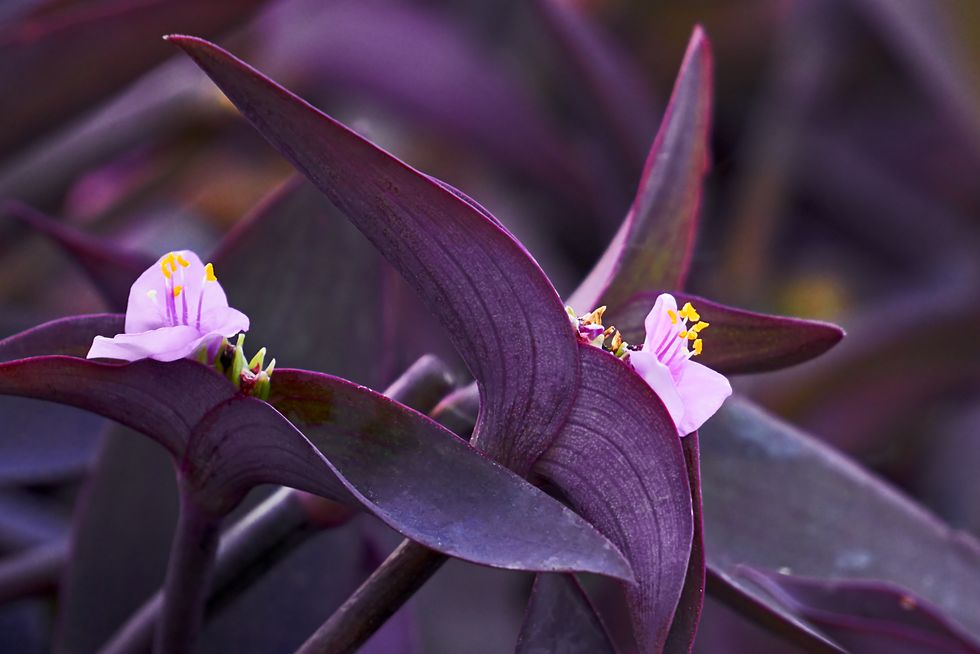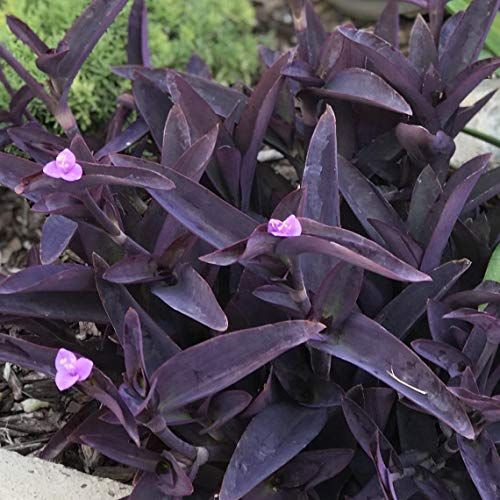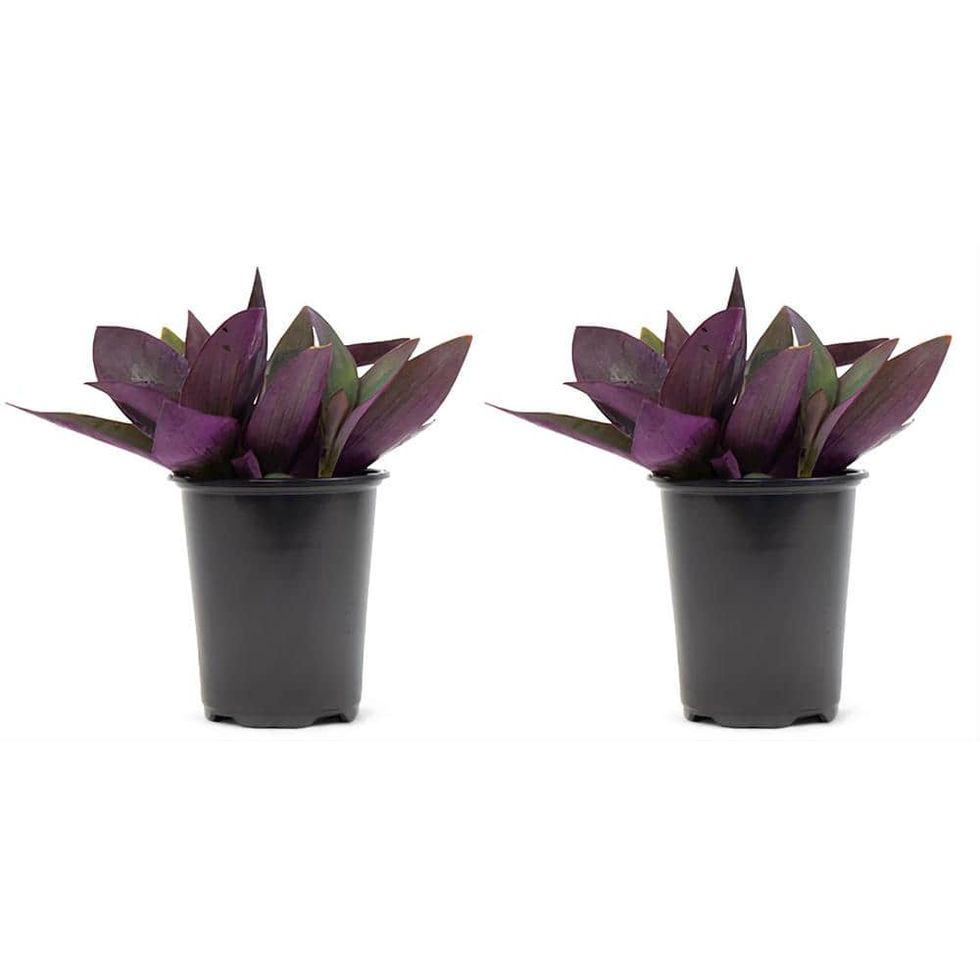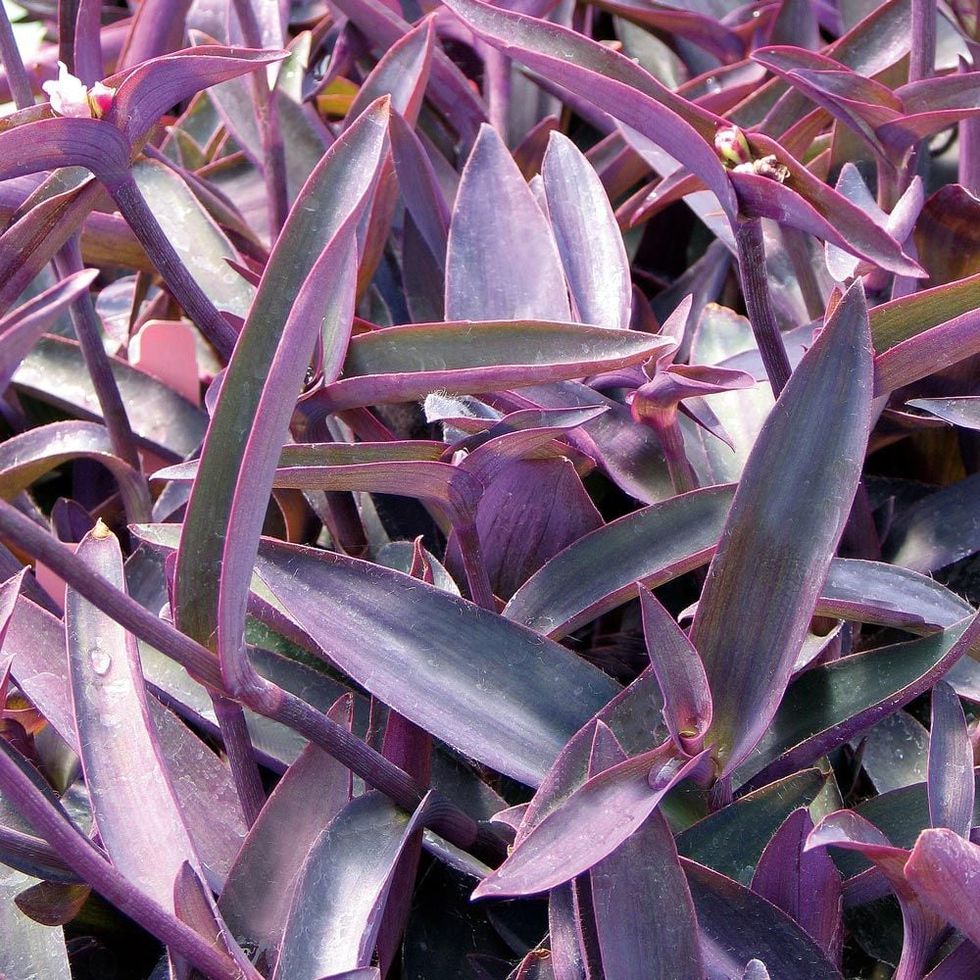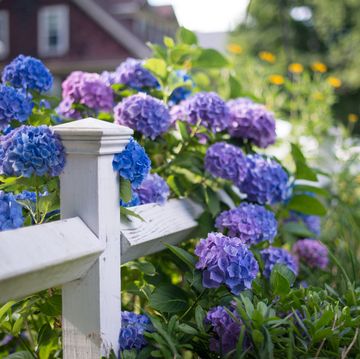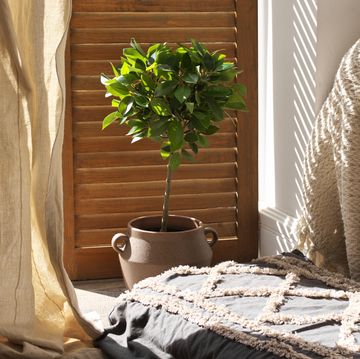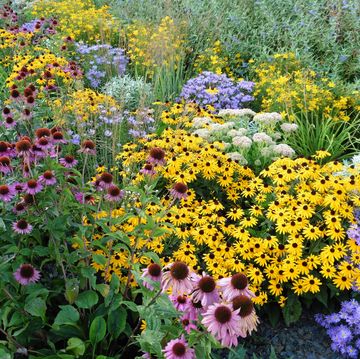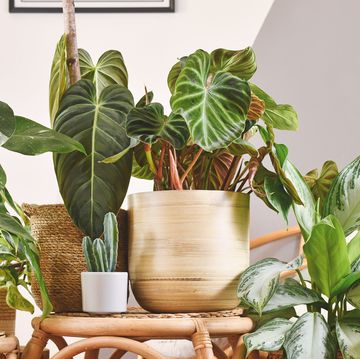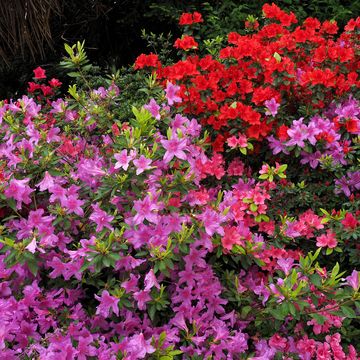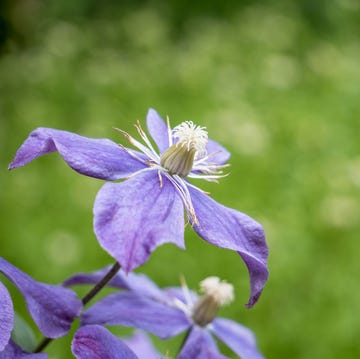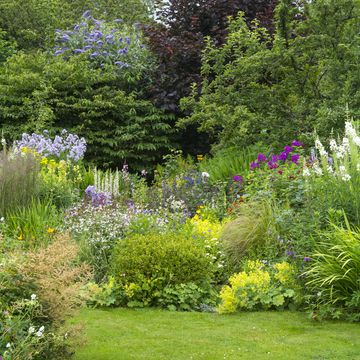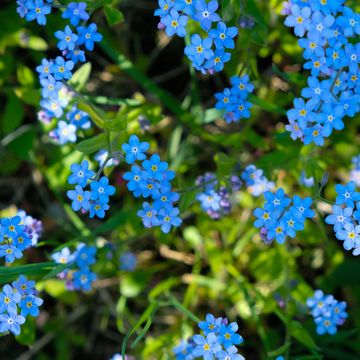The purple heart plant is a cheery, easy-to-grow plant that adds a splash of vibrant color, both indoors or in your garden.
Its incredible dark purple leaves and vining form make it an eye-catching addition to any houseplant collection or landscape planting. Tiny pink flowers appear from summer to fall.
Native to Mexico, purple heart is often grown as a houseplant, though it is perennial in USDA Hardiness zones 9 to 11. (Find your zone here.) Outdoors, it makes a pretty dark ground cover that works well in rock gardens or as an edging plant. (Here are some other great garden edging ideas.)
It’s also lovely spilling over the sides of containers.
Related to other types of Tradescantia, such as wandering dude, purple heart's bright coloring offers interesting contrast to other green houseplants. It’s also more low-maintenance for than some of the other colorful plants that are trending now, such as pink princess philodendron.
With its long dangling stems, purple heart is super-easy to propagate, so it’s a popular pass-along plant. You can even make plenty of cuttings from your houseplant to create a basically endless supply of this plant to use in outdoor plantings, come spring!
Read more: 15 Common Houseplants to Grow and Brighten Up Your Home
Ahead, learn everything you need to know about how to grow and care for purple heart plant:
Why Trust Us?
I'm a garden writer with more than 15 years of experience growing houseplants, edibles, and landscape plantings. I also regularly trial new plant cultivars for performance and reliability, and test garden products to evaluate practicality and durability.
Purple Heart Plant Basic Info:
Common Name: Purple heart plant, purple spiderwort
Botanical Name: Tradescantia pallida (formerly Setcreasea pallida)
Plant Family: Commelinaceae
Type of Plant: Perennial, houseplant
Native Origin: Mexico
Sun Exposure: Full sun to part shade
Mature Size: 1 foot tall and wide
Toxic to pets: Yes
How to Plant Purple Heart Plant
Plant purple heart plant outdoors in full sun (more than 6 hours per day) and well-draining soil. It can tolerate some shade but tends to lose its purple color, turning greenish, if it receives too much shade.
In cold climates, it's planted and enjoyed as an annual.
In warmer climates, it’s a fast-spreading perennial ground cover that also looks fabulous cascading out of hanging pots, window boxes, and mixed containers. It can be especially striking when paired with plants that are green or have a more upright form, such as canna, elephant ears, or other tall tropicals.
In cold climates, purple heart can be grown as a houseplant in any general-purpose potting soil. Make sure it has a pot with a drainage hole, and give it a brightly-lit spot in direct sun. Or use a grow light. (Need a grow light? These are our favorites.) It tends to get leggy if it isn’t getting enough light, so trim it off if it gets scraggly to stimulate bushier growth.
How to Care for Purple Heart Plant
Water purple heart plant when the top inch of soil feels dry to the touch. Go easy! If you let it get too wet, the stems will get mushy and rot.
Outdoors, it is drought tolerant once established, though you can water during dry spells to keep it happy.
Feed this plant with any general purpose fertilizer, if you like, though it’s not entirely necessary. (Here's how to understand fertilizer numbers and letters.)
How to Propagate Purple Heart Plant
Like pothos and its relative wandering dude plant, purple heart plant is super-easy to propagate. Because the purple sap may cause skin irritation in some people, wear a good pair of gardening gloves when handling.
Take a cutting several inches long, strip off the bottom leaves, and place it in a glass of water to root.
Keep the pot in a bright spot in your home (although not direct sunlight), and watch for roots to develop in about two weeks. Then plant in regular potting soil.
Why Did My Purple Heart Plant Turn Green?
A green purple heart plant may still be healthy; it’s just not getting sufficient direct sunlight to keep its purple color.
Simply move the plant gradually into full sun. Start with a half hour or so of direct sun and work up to an hour or two, gradually increasing the time over the course of a week or two. Don’t try to rush it, or you’ll risk frying the plant’s leaves.
Indoors, you will probably need to invest in a grow light if you want to achieve that glorious purple color. The intensity and duration of light on a window sill usually isn’t sufficient for keeping its lustrous purple sheen.
Is Purple Heart Plant Toxic to Pets?
According to the ASPCA, this plant is toxic to pets and may cause dermatitis, or irritation of the mouth or skin. Any plant also may cause vomiting or GI distress if eaten in large enough quantities, so keep this plant away from pets who like to nibble.
Finally, call your vet ASAP if you suspect your pet has eaten any, even if you aren’t sure. It’s always better to be safe than sorry.
Read more: 28 Pet- Friendly Houseplants You Can Grow Without Worry
Arricca Elin SanSone has written about health and lifestyle topics for Prevention, Country Living, Woman's Day, and more. She’s passionate about gardening, baking, reading, and spending time with the people and dogs she loves.

